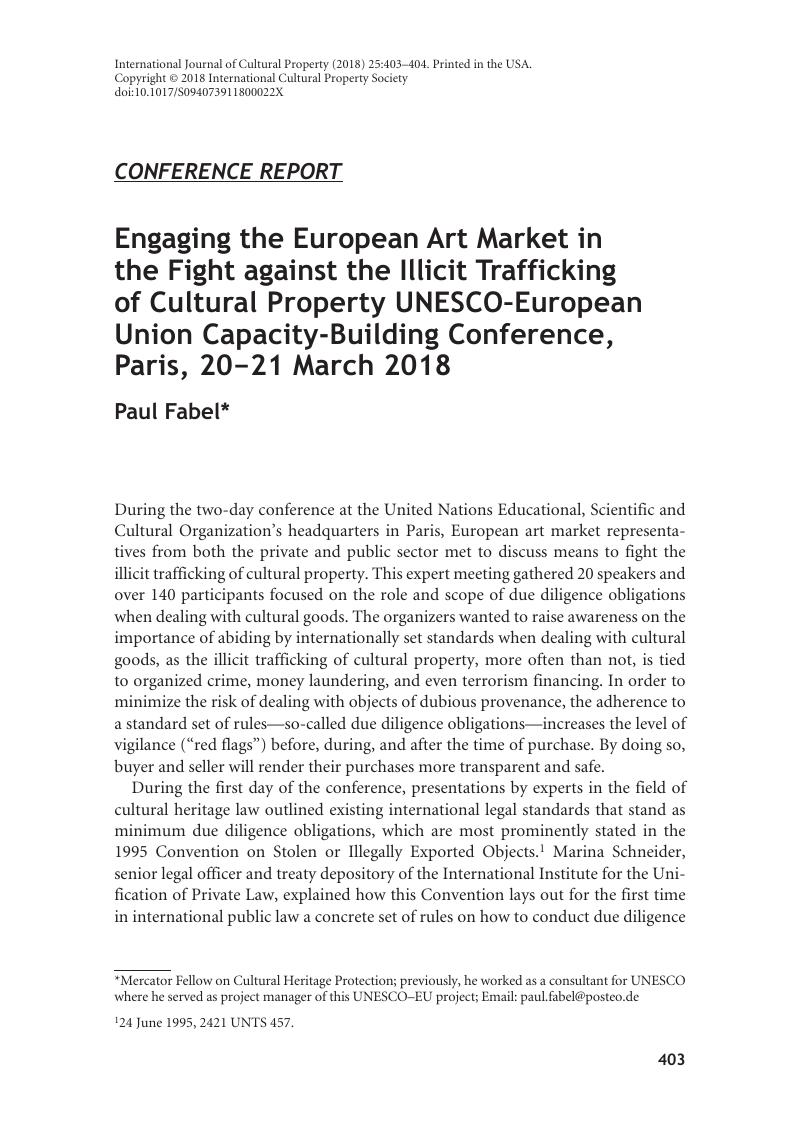No CrossRef data available.
Published online by Cambridge University Press: 20 December 2018

1 24 June 1995, 2421 UNTS 457.
2 Council Directive (EU) 2014/60 on the Return of Cultural Objects Unlawfully Removed from the Territory of a Member State and amending Regulation (EU) no. 1024/2012 (Recast) [2014] OJ L159, 1. The scope of this directive, however, only includes European Union (EU) member states’ national treasures and not third country cultural property.
3 Proposal for a Regulation of the European Parliament and of the Council on the Import of Cultural Goods, Doc. COM(2017) 375 final, 2017/0158 (COD), 13 July 2017. At the time of submission of this conference report in August 2018, the legislative procedure was still under way.
4 Interpol Database, https://www.interpol.int/Crime-areas/Works-of-art/Database (accessed 7 October 2018).
5 International Council of Museum, Red Lists Database, https://icom.museum/en/resources/red-lists/ (accessed 7 October 2018).
6 For example, the Organisation for Economic Co-operation and Development’s due diligence guidance was discussed as a good practice example of public–private sector cooperation and responsible business conduct. Organisation for Economic Co-operation and Development, “Responsible Business Conduct,” https://mneguidelines.oecd.org/duediligence/ (accessed 7 October 2018).